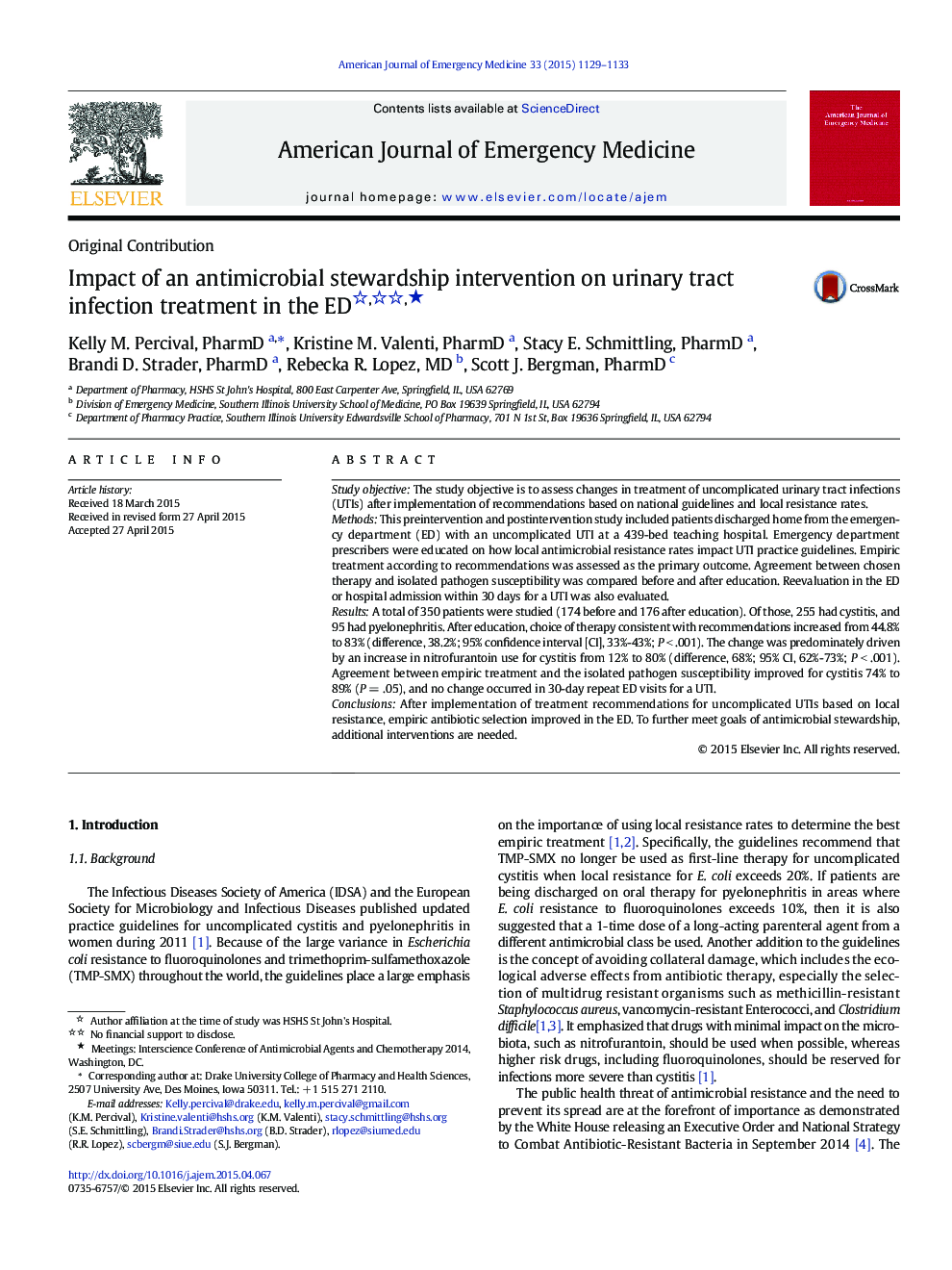| Article ID | Journal | Published Year | Pages | File Type |
|---|---|---|---|---|
| 3223882 | The American Journal of Emergency Medicine | 2015 | 5 Pages |
Study objectiveThe study objective is to assess changes in treatment of uncomplicated urinary tract infections (UTIs) after implementation of recommendations based on national guidelines and local resistance rates.MethodsThis preintervention and postintervention study included patients discharged home from the emergency department (ED) with an uncomplicated UTI at a 439-bed teaching hospital. Emergency department prescribers were educated on how local antimicrobial resistance rates impact UTI practice guidelines. Empiric treatment according to recommendations was assessed as the primary outcome. Agreement between chosen therapy and isolated pathogen susceptibility was compared before and after education. Reevaluation in the ED or hospital admission within 30 days for a UTI was also evaluated.ResultsA total of 350 patients were studied (174 before and 176 after education). Of those, 255 had cystitis, and 95 had pyelonephritis. After education, choice of therapy consistent with recommendations increased from 44.8% to 83% (difference, 38.2%; 95% confidence interval [CI], 33%-43%; P < .001). The change was predominately driven by an increase in nitrofurantoin use for cystitis from 12% to 80% (difference, 68%; 95% CI, 62%-73%; P < .001). Agreement between empiric treatment and the isolated pathogen susceptibility improved for cystitis 74% to 89% (P = .05), and no change occurred in 30-day repeat ED visits for a UTI.ConclusionsAfter implementation of treatment recommendations for uncomplicated UTIs based on local resistance, empiric antibiotic selection improved in the ED. To further meet goals of antimicrobial stewardship, additional interventions are needed.
